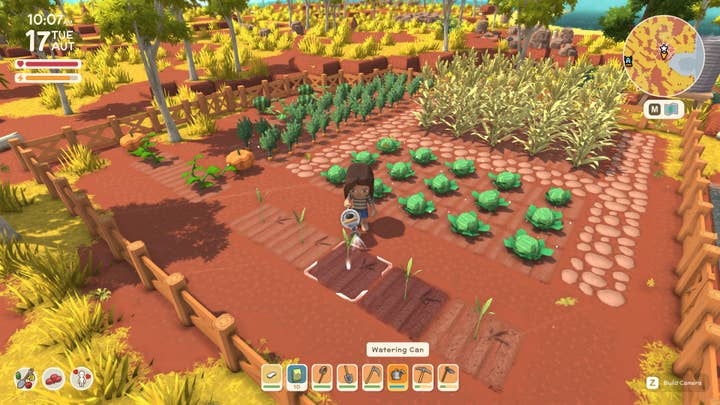Marketing tips to have a successful Early Access phase
Michal Napora shares his experience with EA titles and how to nurture a community that you will love spending time with – and vice versa
When I began working on my first Early Access title, I was very sceptical about the whole model. As a marketer, I feel that Early Access games are a bit harder to promote as opposed to full releases. The press doesn’t show much interest in Early Access games and the consumers behind Early Access titles have a different mentality too.
Usually, consumers aren’t that thrilled over EA titles – although that’s changing – and those that do take the bite have high expectations of close ownership of the product and the development process itself. And if you make a few bad moves along the way, your game is on the back burner. Not to mention how hard it is to gain review coverage in the press once you hit 1.0. So an Early Access title is a different beast.
If you don’t plan your communication right, [Early Access] can lead to doom even before your game comes out
Now after working on a few EA titles (Dinkum, Inkulinati, Medieval Dynasty, and a few more), I feel like Early Access is a fantastic model that can help build a strong community and a great final game. Sure, it’s not for every game type, and some of the drawbacks are still there. But it is a viable option if the game is right.
The one thing that’s certain is that if you don’t plan your communication right, it can lead to doom even before your game comes out. Without a proper communication plan, you might be plagued with negative reviews, you might create an impression that you’re a cash grab, and you might make people think that your game is dead – even if it isn’t.
Today I want to share with you a few marketing and communications tips that might help you have a successful Early Access, and a community that you will love spending time with – and vice versa. Most of these tips are applicable in the "released in Early Access but before the 1.0 launch" phase. Prior to that, traditional pre-release hype tactics work well, and once you’re in 1.0, the traditional post-release tactics work well too, but that’s for another topic for another day.
Prioritise less frequent, bigger content drops
You should prioritise big and meaningful content updates over more frequent, smaller efforts that might not add as much for the players. This is my personal way of doing an Early Access campaign. Bigger content drops, even though they might not occur that frequently, give the impression that more work has been done over the course of the last few months than little drops here and there.
Having big content updates that drop every two to four months really does hype the community up for what’s coming, it’ll make them feel the progress of the game a lot more, they’ll allow you to create bigger and better marketing assets, and encourage YouTubers and streamers to come back to your game and giving it another shot. It’ll also help you create a well-oiled content machine, but more on that later.
An occasional spontaneous gift means the world
The last time you got a little gift out of nowhere, how did it make you feel? Well, for this article's sake, I hope it felt great, ecstatic even. If a small gift brought a smile to your face, then a little in-game content drop for your community can also do you a world of good(will).
These don’t have to be big updates either; perhaps a few cosmetics like outfits, decorative items, a new gun, or skin. A little kind gesture and surprise can really make your community feel pumped and be grateful for all you do – especially if you know your next major update might be a bit delayed…
The first few weeks matter the most! Be in the green
There is nothing worse than having your Early Access title’s Steam User Rating in yellow, meaning it's below 70% positive reviews. That rating creates confidence in your title, so even though you are bringing out a somewhat "unfinished" product, it doesn’t mean that it should be full of bugs that you’ll "polish up later."
If there are complaints or questions coming through, communicate with your community
People still expect a playable product with some content. And if there are complaints or questions coming through, communicate with your community. Respond to negative reviews with help and compassion (where applicable), write Steam updates that tell people what you are working on, and if you can, patch those bugs as soon as you can!
If you invest a bit of time, both from a production and comms point of view in your first few weeks of the EA release, you will build yourself a lot of trust with your playerbase.
That will help you get in the green with those Steam reviews. After all, perceptions are everything. And try to have your first big content update planned five to seven weeks after release, which could also coincide with a sale to attract more players.

Create a nice, well-oiled content machine
You need to build hype for the bigger updates. During your Early Access phase, there are three types of communication messages:
- Communication based on in-game content being released (your game updates, bug fixes, content added to the game, final release)
- Communication aiming at engaging and informing the community, teasing things and keeping the playerbase happy (teaser posts, Q&As, see what coming)
- Marketing activities, such as events, new platforms, partnerships, and son
Remember, each of your bigger updates is a stepping stone in your EA phase. Make a big deal about them, get people excited for them and show that the game is alive and growing. You can build yourself a really nice content plan around your major releases.
Ask those questions – it’s all about perceptions
Remember, the idea behind the Early Access model is that you will use your community’s feedback to build a better game. And how can you get good feedback? Asking players questions is a good start.
Once your game and each of its subsequent major updates are out, create surveys and ask your playerbase on their attitudes and feelings. What do they like the most about the game, what do they dislike the most, how do they like to play the game, which features do they like, and what other content would they like to see?
There is a lot of gold to be found in there (and dirt too, but you can’t prospect for gold without getting a bit muddy) and perhaps their feedback might lead to a new direction...
Be prepared to pivot (a bit)
Even when you have an idea of what type of content and features players might enjoy in your game, players often end up playing in a way you never expected.

I once worked on a survival game that had town-building elements. Before the game came out, I was certain that what players would want more of is content related to survival. But once the game came out, and we started sending out surveys and reading comments, it was clear that there was a group of people that loved the town-building mechanic and wanted new buildings and decorative items to express their creativity with.
This insight made us pivot a bit with the type of content we had planned for the next major updates. We started to plan for different buildings and items that would make their town more personalised. And once we started teasing that content and releasing it, we got a lot of positive feedback and praise from the community. So be prepared to pivot a bit. After all, you are doing it all for the community.
Don’t be a slave to your game
If there is one thing you take from this article, take this. Don't be a slave to your game. Set boundaries both with yourself and with your community. If you start working weekends to release new minor bug fixes and updates weeks after release, then guess what – people will expect this to be the norm. On top of burning yourself out, players will think you've abandoned the game if you then make fewer updates, and everything can go downhill from there.
The same applies to general communication with your players. If you don’t set boundaries, that comms crunch of yours will become the norm.
Set boundaries so that your community will know that the devs have time off on Saturdays and Sundays and will come back to queries on Monday. No one needs to know that you will fix a bug on a Sunday. They can wait.
Set boundaries both with yourself and with your community
We sometimes forget that we only make games – we’re not saving species on the brink of extinction, we're not surgeons that need to be on call, or we’re not soldiers in occupied territory protecting their homeland. What we do is only a video game. Relax. Set boundaries and expectations so you do not mentally and physically crash and burn to the ground.
I hope that these few tips will be of some use to you. If you keep your community informed, be transparent, and be genuine (the trifecta of good communication), you’ll be fine.
The worst thing you can do is remain quiet because players then fill in the blanks with their own stories and explanations. Once that happens you can never know (and control) what they’ll come up with. Make sure that your communication comes from an honest place. I guarantee that if you do that, people will feel that too, and you’ll be on the way to having a fantastic community for a game that you will love to work on for many more months ahead. Good luck and go forth!
Michal Napora is a video game marketer and owner of marketing agency 32-33. His gaming credits include Dying Light, The Sinking City, Aragami, Sherlock Holmes: The Devil's Daughter, and more. If you need help or advice on marketing, you can reach out to him on LinkedIn.
